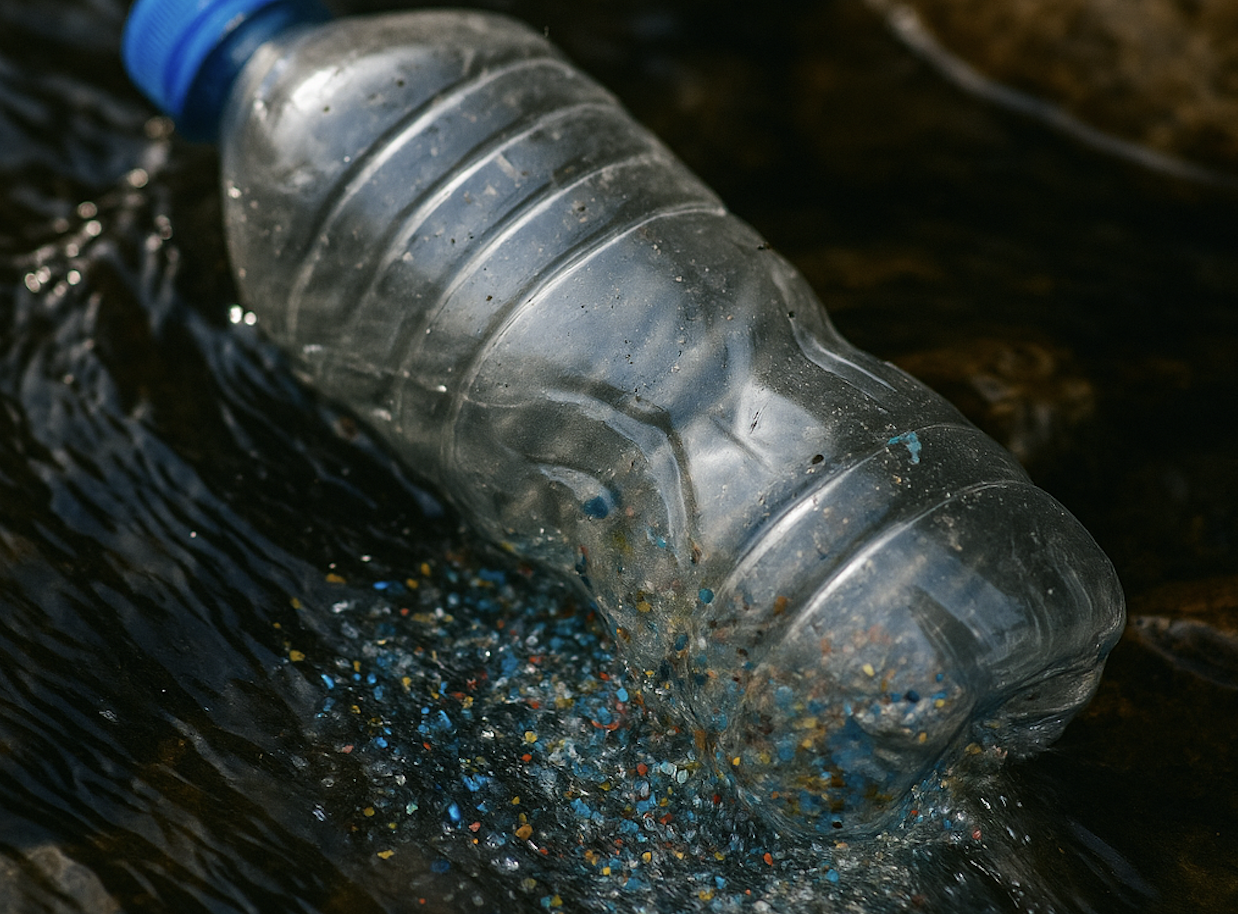What Are Microplastics? Understanding the Invisible Threat
Understanding the invisible threat in our environment and its impact on our health

In today's fast-paced world, we are surrounded by plastic—from food packaging and clothing to personal care products. But what happens when that plastic breaks down? Welcome to the world of microplastics—tiny particles that pose a big problem for our health, environment, and future.
What Are Microplastics?
Microplastics are tiny plastic particles less than 5 millimeters in diameter—about the size of a sesame seed or smaller. These particles come from a variety of sources, both primary and secondary:
- Primary microplastics: Intentionally manufactured small plastics like microbeads found in cosmetics, toothpaste, and some cleaning products.
- Secondary microplastics: Formed when larger plastic items (like water bottles, bags, or fishing nets) break down over time due to sunlight, heat, and mechanical wear.
They may be microscopic, but their impact is massive.
Where Are Microplastics Found?
The short answer: everywhere. Microplastics have been detected in:
- Oceans and rivers
- Tap and bottled water
- Seafood and table salt
- Air and dust
- Human blood, lungs, and even placentas
Studies have revealed that the average person could be consuming up to 5 grams of plastic per week—roughly the weight of a credit card.
How Do Microplastics Enter the Body?
Microplastics enter our bodies primarily through three routes:
- Ingestion: Eating contaminated food (especially seafood), drinking water, or even consuming produce exposed to plastic-polluted soil or packaging.
- Inhalation: Breathing in airborne plastic particles, especially in urban or indoor environments with synthetic textiles and dust.
- Dermal Contact: Though less common, some studies suggest skin exposure via cosmetics or personal care products may also be a pathway.
Health Risks of Microplastics
While research is still evolving, early studies suggest that microplastics may:
- Trigger inflammation and oxidative stress
- Disrupt hormonal balance due to chemicals like BPA and phthalates
- Impact gut health by altering the microbiome
- Affect fertility and immune function
We don't yet know the full extent of the long-term effects—but the concern is serious enough to spark global investigations.
How Can We Reduce Microplastic Exposure?
You may not be able to eliminate microplastics entirely, but you can reduce your exposure and help limit their spread:
- Avoid single-use plastics: Use glass, stainless steel, or bamboo alternatives.
- Choose natural fibers: Opt for cotton, linen, or wool instead of polyester or nylon.
- Filter your water: High-quality filters can reduce microplastics in tap water.
- Avoid products with microbeads: Check ingredient lists for polyethylene or polypropylene.
- Support legislation: Advocate for plastic bans and support brands that prioritize sustainable packaging.
The Bigger Picture: Why It Matters
Microplastics aren't just a personal health issue—they're an environmental crisis. They harm wildlife, pollute oceans, and enter the food chain at every level. Addressing this problem requires collective action—from individuals, industries, and governments.
Final Thoughts
Microplastics may be tiny, but their impact is enormous. Awareness is the first step toward change. By understanding where microplastics come from and how to minimize our exposure, we can protect our health and our planet.
Ready to Reduce Your Exposure to Microplastics?
Join TraceWell to monitor your water, uncover hidden contaminants, and get smarter health recommendations - so you can make safer choices every day.
Sign Up for Free